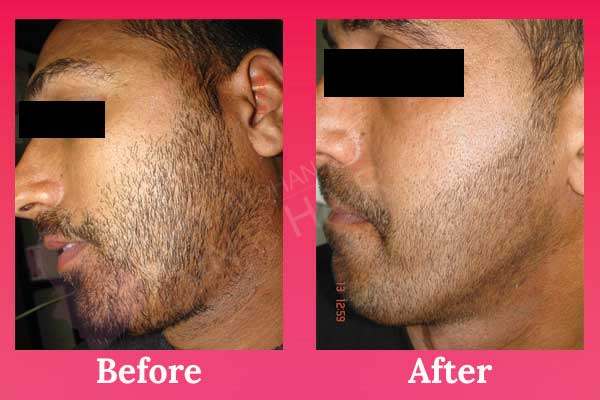PLATELET RICH PLASMA THERAPY: USES, HOW IT IS DONE, & CONDITIONS
Platelet Rich Plasma (PRP Therapy) treats an extensive range of conditions in the dermatology field as explained below. At the advanced skin and hair centre, PRP Therapy is used for hair loss treatment, anti-aging solutions and for facial rejuvenation. Apart from the cosmetic concerns, PRP has also been used in the Orthopaedic sphere for multiple decades.
RESULTS
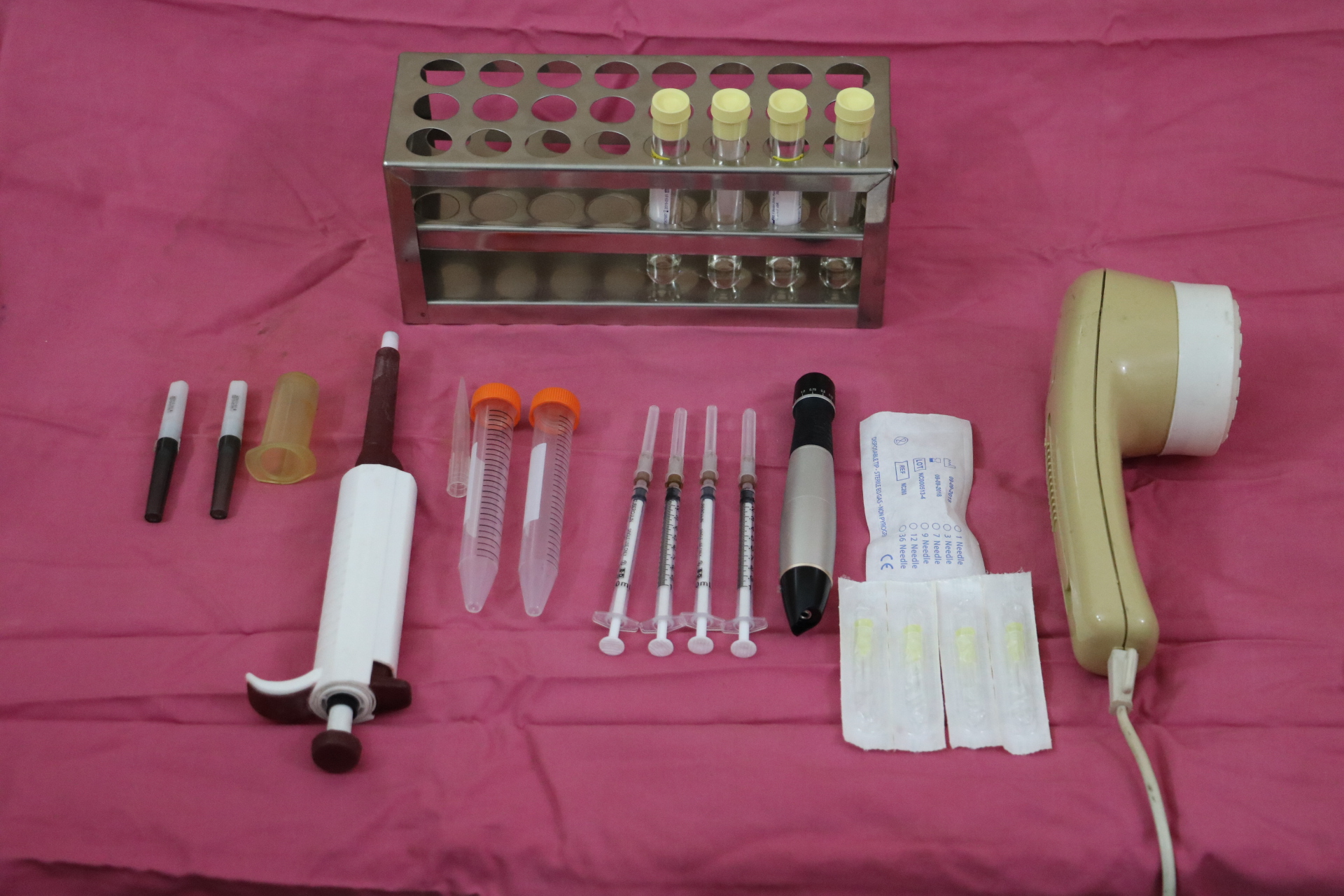
WHAT IS PRP THERAPY?
Platelet Rich Plasma, commonly known as PRP is a unique formula with multiple healing properties used in the dermatology clinics. PRP is derived from a patient’s own blood and it is one of the safest treatment used with no side effects.
The human blood consists of various components, such as the White blood cells, red blood cells, plasma, and platelets. Platelets are the main target during PRP therapy since it contains powerful healing and growth factors that produce aesthetic results during skin treatments and hair loss treatment.
Your own blood is simply used to stimulate new cell growth.
The treatment is completely non-operative with promising results whenever used. PRP must be prepared in an advanced clinic since it requires technical expertise to achieve the concentrated platelet.
The treatment will also require consultation from any concerned doctor.
THE SCIENCE BEHIND PRP THERAPY
Our blood is made of various components and platelets is an example. The platelets and plasma are responsible for blood clotting after an injury. More platelets in the body mean that in the case of an injury, bleeding will stop instantly. Therefore, platelets are very significant during the healing process.
Among other blood components are red blood cells (93%) and white blood cells (6%). For decades, PRP was most known in the treatment of tendons, damaged ligaments, and joints by stimulating the natural healing process.
In case of PRP treatment, a patient’s blood must be introduced to advanced mechanisms of boosting the platelet quality. The concentrated platelets will then be introduced into the body for the intended purposes.
Advanced technology together with research have facilitated the application of PRP treatment in other fields, especially as a hair restoration option and skin treatment.
THE HISTORY OF PRP
Platelet Rich Plasma was first developed in the 1970s in an open heart surgery procedure and since that time, more research has been done to explore the wonders of the treatment.
The application of PRP treatment in the orthopaedic sphere was common until the 1990s, when the treatment gained a diverse interest among the other medical fields.
From the mid 1990s PRP treatment became popular until the date when it is utilized in cosmetic surgery, alopecia treatment among others.
Currently, PRP treatment is seen as the immediate treatment of hair loss, especially for women who aren’t interested in the surgical methods of hair restoration.
The treatment can also be provided after hair transplantation.

Harpal
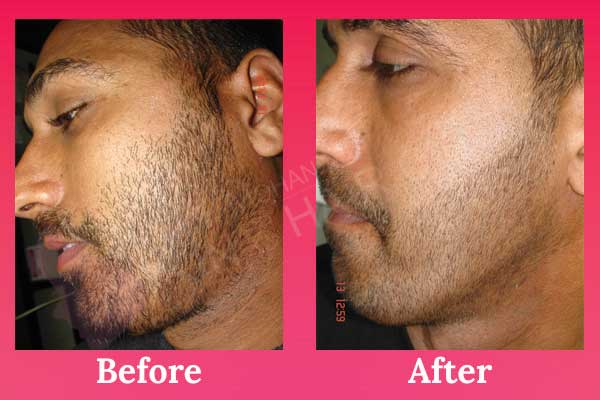
Kuldeep Singh
How is PRP Performed/done
- It is an outpatient treatment that takes approximately an hour for completion. After a consultation and an evaluation, the required amount of blood (10 to 30ml) is retrieved (withdrawn) from a patient and taken to the laboratory.
- The blood is introduced to the process of centrifugation (spinning and secluding) under an expert’s surveillance.
- The motive of centrifugation effect is to produce super-concentrated platelets of about 400% or more to produce the best results. The centrifugation process spins the blood at a very high rate to the point of forming three layers.
- The layers are easily identified and the platelet rich layer will be separated and kept.
- On the next visit, the rich plasma will be injected into the patient’s body exactly in the intended part. The treatment will be given after local anesthesia administration and it will take approximately 15 minutes.
- Further treatment schedules will be planned after a few weeks as the doctor may observe.
CONDITIONS TREATED WITH PRP THERAPY
A variety of conditions can be treated with the Platelet Rich Plasma therapy with efficacy. Let’s have an overview;
PRP Therapy in Orthopaedics
There are various cases where platelet rich plasma is applied such as;
- Knee Sprains and instability
- Ankle Sprains or Ankle Arthritis
- Shoulder pain and Instability or shoulder arthritis
- Lumber and cervical facet dysfunction and pain
- Nerve Entrapment Syndrome, for example Carpal Tunnel Syndrome
- Achilles tendonitis & Plantar fasciitis
- Hamstring & Hip Strains
- Rotator cuff injuries
- Pelvic pain & Instability
- Lumbar Spine Disc pain
- Sacroiliac (SI) joint dysfunction and pain
- Joint Sprains
- Post Surgery healing process
- Tennis and golfer’s elbow
- Knee, hip, and other joint Osteoarthritis among others
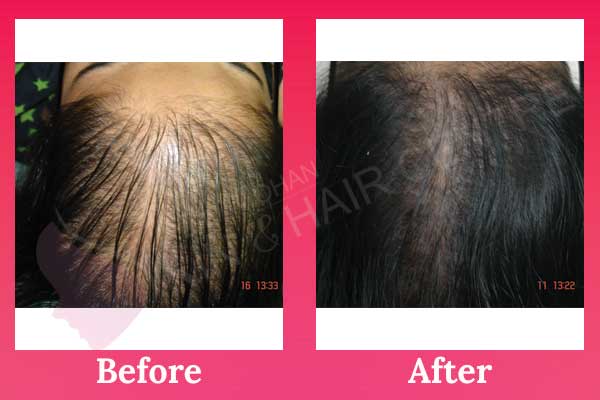
Sandeep
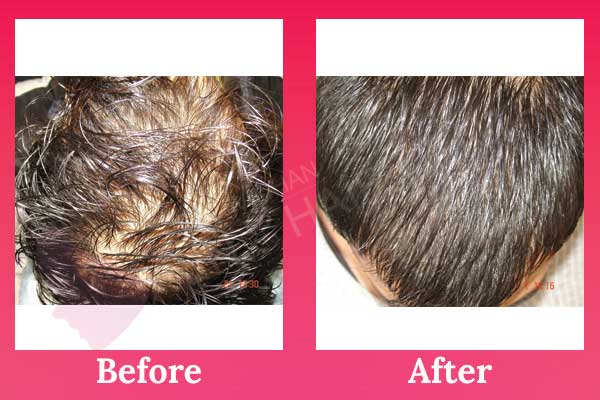
Varun
PRP Therapy for Hair Loss Treatment
Technology advent introduced us to the surgical means of hair restoration that are seen as the permanent solution to hair loss, also known as alopecia. PRP therapy as a single procedure can be performed in the case of moderate hair loss.
The method also applies the same theory where the patient’s own blood is withdrawn from the body, centrifuged and injected back exactly in the thinning region of the scalp.
When it comes to hair loss, the PRP therapy contains numerous growth factors such as; Epithelia growth factor (EGF), Platelet Derived Growth Factor (PGDF), Transforming Growth Factor (TGF), and Vascular Endothelial Growth Factor (VEGF).
The available growth factors will stimulate the stem cells available to produce more hair. It can also repair the damaged or worn out cells in order to facilitate more hair growth.
PRP after hair transplantation is seen as an excellent choice of boosting natural results with a greater density.
PRP Therapy for Skin Treatments
PRP is a great breakthrough in cosmetology and it is applied in the following ways;
- Facial rejuvenation
- Reduce wrinkle
- Treat scars and thermal burns
- Restore facial volume
- Improve the skin complexion
In case a patient is interested in PRP treatment for eliminating any skin condition, the patient must seek consultation for evaluation and an observation.
The Procedure of Administering PRP Therapy in Hair Restoration
A number of hair loss patients fail to attain the desired results from PRP therapy. The mere fact is the inadequacy of experience and expertise from the hair restorer.
To attain the best quality concentrated PRP, experts at our centre centrifuge one’s blood twice. The process of centrifugation is performed using an advanced centrifuge while the doctor monitors the time, speed and the temperature at which the blood is spun.
Mistakes in the centrifugation process can result in poor quality PRP that has less impact on one’s hair growth and stimulation of healing factors.
Options for PRP Therapy in Hair Restoration.
PRP therapy provides two alternatives of hair restoration and they include;
- PRP as the main hair restoration treatment
- PRP with a Hair Transplant
PRP Therapy Alone
A majority of women desire therapies compared to hair transplantation. The main reason remains that it is largely described as a male “thing”. A PRP Therapy requires an examination or scientifically termed as a diagnostic procedure to ascertain the actual cause of hair loss and plan the PRP treatment sessions accordingly.
Depending on the extent of hair loss, 3 or 4 treatment sessions are planned and administered every after 3 or 4 months.
During every procedure, the hair expert will clean, numb the scalp and then inject the Platelet Rich Plasma into the scalp for hair growth and elimination of hair loss.
Reasons as to why PRP Therapy Fails
- Extreme hair loss
PRP alone can’t eliminate excess hair loss, and that is why hair experts recommend a hair transplant first and then the therapy follows. - Lack of expertise
Poor centrifugation measures that result in low-quality PRP limit the rate of hair growth and has less effect on the damaged hair cells.
PRP Therapy with a hair transplant
- Whether an FUE or FUT hair transplant, a PRP therapy is performed to boost the natural results.
- The Platelet Rich Plasma acts as a stimulator for the stem cells to fully develop.
- The PRP also promotes the desired hair density in case of extreme hair loss.
- Having performed a hair transplant procedure, the surgeon will clean and numb the scalp region that is filled with new hair follicles.
- He will then administer a PRP injection to attain excellent results.
Platelet Rich Plasma Therapy: Step by Step
PRP (Platelet Rich Plasma) generally requires the extraction of a fraction of the blood from the patient and prepared by the experienced physician or dermatologist.
The nonsurgical hair restoration procedure provides a chance for excellent hair restoration after being performed by a trained and experienced hair surgeon. The PRP therapy is used in various spheres such as;
- The Orthopaedic
- Dermatology (cosmetic procedures)
- Diabetic patients
- Dental implants
- Hair restoration among others
The typical PRP procedure takes about 40 to 60 minutes and it’s completely an outpatient treatment. An advanced dermatology clinic or a hair transplant centre must be selected for the treatment.
An experienced physician follows devised protocols using modern technology and instruments to attain the approved PRP content. Among the technologies, there are;
- A centrifugation machine
- Modern aseptic equipment
- PRP-Kit
- Sterile tubes and
- Injections
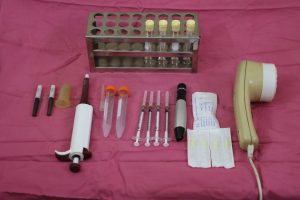
Pre-PRP Precautions
At the leading skin and hair centre, standardized precautions are taken before PRP therapy in India to attain the best quality concentrated PRP. Prior to the treatment, a patient may be advised to;
- Discontinue any other treatment including drugs
- Anticoagulation medication must be stopped 6 days to the treatment
- Corticosteroid medications must be avoided at least for a month
- Non-steroidal anti-inflammatory drugs (NSAIDs) such as aspirin and ibuprofen must be stopped at least 5 days prior to the procedure
- A patient must have a regular balanced diet
Understanding PRP Treatment
Platelet Rich Plasma therapy (PRP) is a proliferation therapy or a regenerative treatment where growth and healing properties are attained through an advanced mechanism.
An injection containing PRP is then administered to achieve the intended region (scalp).
The activated platelets introduce growth factors, bioactive factors, and cytokines, which are essential types of proteins. In the same way, fibronectin, fibrin, and vitronectin contribute to a repair or regeneration matrix. These will initiate the natural healing process.
The PRP Mechanism/ Process (Step by Step)
1. Preparation of PRP
-
- On the day of the treatment, aseptic equipment is properly prepared in the operation or private room. These include new injections, vibration anesthesia, a PRP kit, test tubes, syringe among others.
- A centrifugation machine and a refrigerated CM-8 are also prepared. These are aimed at preparing the blood for the best concentrated PRP. The modern technology prolongs the shelf-life of the platelets compared to the traditional or other centrifuges and therefore, the best treatment is assured Excellent machines and modern equipment are utilized at our skin and hair centre.
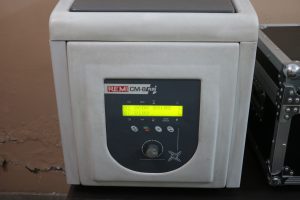
- By using a 20cc syringe, the doctor will remove 2cc of anticoagulant and will then draw 18cc of blood and will thoroughly mix them. The blood is normally drawn from a vein in the patient’s arm. In other cases, 35ml of blood is collected.
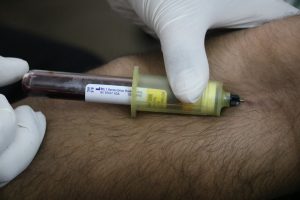
- The next step is generally referred to as blood processing.
The blood will be injected into the Dr. PRP kit through the upper injection port. The kit is tilted to avoid spilling of the blood sample.
-
- The blood is then introduced to the first centrifugation process. By this, the kits must be balanced and the physician will then press the F2 button on the PRP centrifuge to begin the spinning cycle.
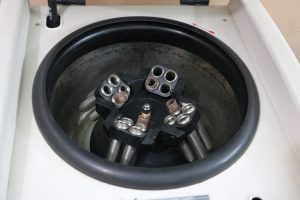
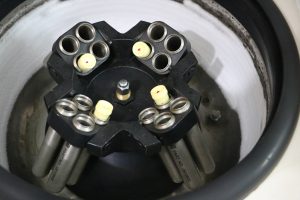
The doctor will then adjust the height of the separated boundary by pulling up or down the adjusting knob. The following are carefully observed;
-
- Speed
- Time
- Temperature
-
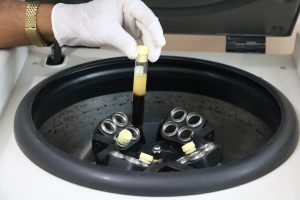
- Observing the speed of centrifugation, temperature and the time will aid in keeping the biological properties intact.
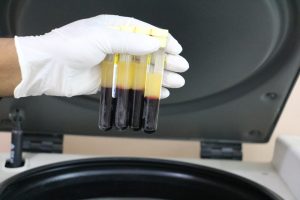
- Cooling centrifuge helps to save the platelets from the heat effect that is generated during the configuration process
- Platelets must be processed and stored at 22 C
The concentrated platelet will be mixed using a 5cc syringe and the doctor will then administrate it.
The upper silicone lid of the kit is opened and the PRP is taken out using a 10cc syringe.

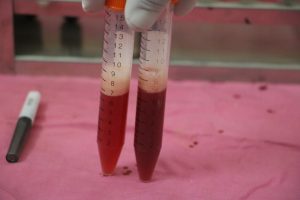
-
- The second Centrifugation process

The second spin cycle of the PRP is aimed at obtaining the best quality concentrated PRP that will produce the best natural results. During this process; - The doctor will press the F3 button on the PRP centrifuge while balancing the procedure.
- The plasma and the RBC layer will be obstructed or cut off by fastening the adjusting knob.
- Concentrated platelets will be obtained after the second centrifugation and commonly, 5ml of quality PRP.
- The second Centrifugation process
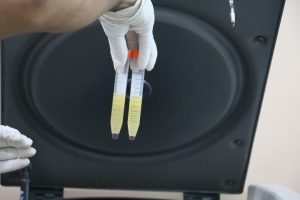
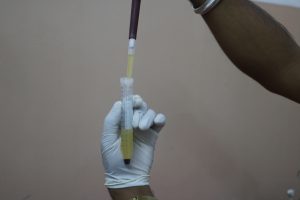
-
- 2. Administering the prepared PRP
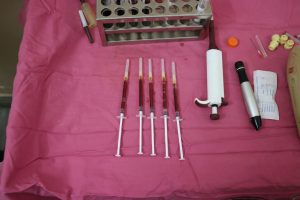
-
- A PRP therapy can both be performed after a hair transplant or as an individual hair restoration procedure. Whichever way, the process of administering the prepared PRP therapy remains the same as explained below;
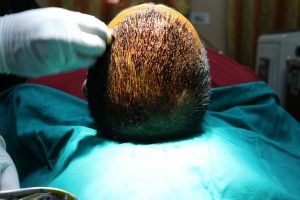
-
- The scalp will be cleaned using a disinfectant such as alcohol or iodine. An iodine injection is used by some doctors because of a belief that anesthetics may reduce the effectiveness of the PRP therapy.
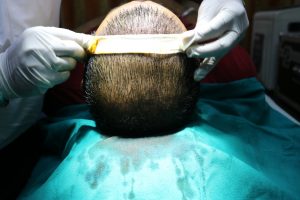
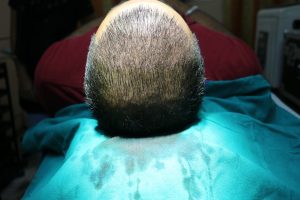
-
- In case an ultrasound is being used, a specific gel is applied on the nearby skin from the injection site. An ultrasound probe is pressed against the area where a gel was applied and an image of the tendon will be projected on the screen.
- A patient is advised to stay calm and relax. The doctor will then use a syringe and a needle to inject a given amount of Platelet Rich Plasma into the scalp.
- In other cases, Microneedling with Dermapen is used during the PRP procedure. Vibration anesthesia is used to minimise pain.

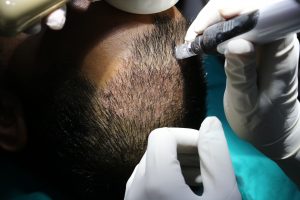
- Once the PRP injection is completed, a patient is free to return home.
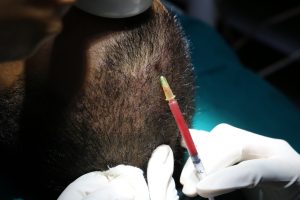
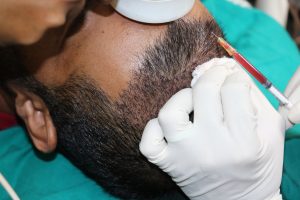
Benefits of PRP Therapy
- PRP therapy is applicable in many medical spheres and it is highly utilized due to its effectiveness in introducing healing and regeneration factors into the affected tissue or part of the body.
- In hair restoration sector, the PRP injection releases growth factors into the hair roots which promote hair growth.
- With time, the natural results of PRP Therapy in Phagwara are witnessed every month as the bald region will then be covered with natural hair with a good density.
- The PRP therapy boosts the hair quality after hair transplantation, therefore, it is ideally recommended for extremely bald patients.



